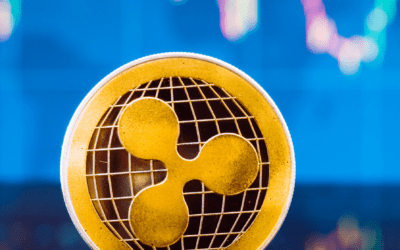Dateline: Tbilisi, Georgia
Last week, I told you about how I bought cattle land here in Georgia for little more than a song and a dance. I’m a big fan of investing in agriculture for the same reasons guys like Jim Rogers and other investors are.
However, investing in managed funds can be very difficult and potentially dangerous. Having organized an annual offshore investment conference for three years, I’ve heard all the pitches from guys hawking dubious investments. One of these guys even flew across the country to try and convince me. He asked that I let him pay me so he could promote at my future conferences.
In terms of simplicity, offshore managed funds and investments aren’t like domestic mutual funds. With domestic funds, you simply send some money to a money manager, then sit back and manage your account online. If you’ve never invested offshore, it’s important to familiarize yourself with how offshore investing works. You should be especially aware of the lack of liquidity that’s often involved.
This article is about my experience with the Laos Rice Bank and how, despite knowing people connected to the fund manager and having a little knowledge of the market, I still had a bad experience.
What is the Laos Rice Bank?
The Laos Rice Bank is, of course, not a real bank. Neither I, nor hopefully anyone else, thought it would be. What it is, according to the fund’s PDF guide, is a way to “capitalize on micro lending and rice futures”.
The fund promised a “diversified… feel good opportunity” to participate in an investment that “ticks all the boxes”, offering “high returns” on an in-demand product.
No doubt rice is in high demand in Asia, and especially in Laos. As one of the world’s last remaining communist countries, higher protein diets are not as prevalent as in other parts of emerging Asia.
And micro-lending is indeed a hot market in Southeast Asia. It’s particularly hot in less wealthy markets where farmers often have to rely on “Bombay loans” from Indian immigrants at interest rates of up to 20% per month to harvest their crops.
So far, so good.
Objective #1
According to their sales literature, the Laos Rice Bank had two objectives. The first was micro lending, the sort of lending in which plenty of Southeast Asian micro-finance institutions engage. As a result, they are able to pay high deposit interest rates in local currency:
Local village farmers run out of money between harvests and seeing that most of them don’t use banks (most of the economy is CASH), they use local money lenders. [sic] The money
lenders are generally rich Chinese and Vietnamese who charge them 20% per MONTH, paid
monthly! Short term for 3 to 4 months but some go longer and still pay as they secure the
loan with their “Land Book” which is the title to their land. (Whoever holds the Land Book is
deemed to own the land.) The Village Chief witnesses the agreement to all loans greater
than $500 to eliminate any future issues.We charge the farmer reduced fee of only 15% per month to help the farmers but still give a
great return for our investors, creating a perfect win/win! The farmer saves 5% per month
and our investors earn more in 1 month than what most banks pay in a year!
The average loan is only $200 to $500, which is why the default rate is virtually non-existent
as the debt is secured by the farmer’s land. The land is a LOT more valuable than the debt!
Objective #2
The other aspect was pre-purchase of rice; in essence a real world future exchange:
The currency used in the example below is Laos Kip. The resale value of the rice is what
makes this incredible opportunity work.We pay farmers about 3 months in advance for rice: 120,000 kip for 100kg rice, eg: Buy in Oct for 1,200/kg and sell in Jan (3 months later) for 2,000kip/kg = 60%ROI
Our return increases dramatically if we remove and sell the skin.
If we remove the skin, the value of the rice increases to 5,000kip/kg and we can get 2,000kip
for skin.100kg will give us about 70kg rice with no skin. Therefore 70kg x 5,000kip + 30kg x 2,000kip = 410,000kip = 290%ROI
There is not a lot of cost in getting the skin removed so this is definitely the way to go as the
return on investment increases from 60% to a whopping 290%.Rice increases in value dramatically around Laos New Year (April) and is usually around
7-9000 kip/kg so we intend to store a large amount of the rice to sell for a premium.
While I would have preferred focusing on one concept or the other, the minimum investment made this a gamble I was willing to try. As I frequently say, people blow $5,000 on a weekend in Vegas, so $5,000 to be the guinea pig for a new offshore investment is worth it in order to report back to my readers.
How I discovered the Laos Rice Bank
I discovered the Laos Rice Bank through hosting my first Passport to Freedom conference. One of our speakers shared the opportunity privately with myself and a few other speakers. He knew about the opportunity as he was friends with Rob Wilson, the founder of Laos Rice Bank.
Because of Laos lending rules, Rob had to transact business through his Laotian wife, Douangchanh Panthalack. She was legally able to issue and collect on the loans.
I didn’t have a lot of confidence that my speaker had done much due diligence on his friend, but I also didn’t expect much for such a small initial investment. I felt that $5,000 was way too low of an initial deposit. My friends who run real managed investments were raising their minimums well into the six figures.
However, as I had just come from the Philippines where I was studying this exact business model, I was eager to get involved — if nothing else — as an experiment.
Contacting the manager
Shortly after the conference, I got in touch with Rob Wilson and we chatted about the Laos Rice Bank. This site wasn’t as prominent then as it is now, but he knew who I was on account of our mutual contact.
Going into the call, I had heard a backstory on Rob that I still can’t confirm. Allegedly, Rob ran a successful financial services firm in Australia that got nailed by the government for violating some arcane regulation. He eventually won the lawsuit, but effectively being out of business during the investigation thrust him into a bad financial situation. The business eventually collapsed while the government fiddled.
I never asked Rob about his background. To my detriment (in a lesson worth learning), the libertarian in me didn’t care. I had had several clients who’d been heckled by the US government when I worked in the broadcasting industry. I knew those guys didn’t do the stuff that they’d been accused of.
Perhaps, I figured, neither had Rob… if the back story was even true.
Anyway, Rob explained how the fund worked and confirmed the $5,000 minimum. He explained that the fund paid returns twice a year after harvests and had a two-year minimum hold. He outlined the simplicity of the fund: he kept 50% of the profits and investors got the other 50%. It was clear that the Laos Rice Bank was not some sophisticated fund, nor did he portray it to be.
In fact, Rob was very upfront about the archaic nature of the set up. He explained that the process for getting to his wife’s village in rural Laos involved flying to the capital city of Vientiane, followed by a ride on a chicken bus and then taking a sort of primitive transportation through a bunch of mud. Once in Laos, it was a trip of about five hours.
The initial investment
I committed to move forward with Rob, ignoring the suggestion that the few initial investors had been earning 80% annual returns. I decided I wanted to see how micro-financing in Southeast Asia would work.
While I committed to Rob, I’ll admit that I delayed for a few months while in the middle of traveling. I was a bit apprehensive about remotely asking my banks to wire money to Laos, so I delayed.
A few months later, I was in Cambodia with a broker friend of mine when a deal we were working on together fell through. Ironically, the earnest money deposit on the property I was buying in Phnom Penh was $5,000. When the broker informed me that the seller had backed out, I simply connected him with Rob. He forwarded my deposit to the Laos Rice Bank’s bank account and I was officially an investor.
Within a week, I received a basic welcome package with details of my participation in the fund. It came with a promise that I’d receive an interest and profit share payment with the next distribution a few months later.
Waiting for a return
The beauty of a managed fund is that you’re not supposed to think about it, so I didn’t. I continued to research the concept of frontier market micro-finance, but I didn’t talk to Rob much.
Eventually, the first bi-annual return was sent to investors. It came with some bad news: the fund didn’t make much over the preceding six months. Early investors (two of whom know another friend of mine) claimed to see returns approaching 100% in the first year. However, Rob was suddenly telling us that returns were in free fall.
The return was all of about $100 on my $5,000. That’s not bad for a CD in a US or European bank, but it’s horrible for an operation lending money at extortionate rates.
In a chicken-or-egg scenario, it seems Rob lost some focus on the Laos Rice Bank. Shortly after sending news of the poor returns, he emailed to promote his latest venture: a curtain business in Thailand.
What connection to Thailand Rob had I don’t exactly know. However, he somehow managed to find a lady named Nutcha who ran a business selling curtains in Ubon Ratchathani, Thailand. And, according to Rob, she was (quell your surprise) doing brisk business.
A new offer
Here’s Rob’s email to me on December 22, 2014:
Hi Guys,
Firstly, sorry that this is a bulk email but time is of the essence and the clock is counting down to Christmas so I wanted to get this to you ASAP. This is going to a bunch of friends and close business associates.
Secondly, I’d like to wish you and your families a VERY Merry Christmas and an AWESOME New Year.
If you have been following me on FB you would have read about me coaching a Thai lady for 6 months and have been that impressed with her that I am now a 50% Partner and I personally control all of the funds for everyone’s protection.
I have not had a chance to update the attached doc as it says that there will only be 4 investors. We have since brought on more as the business is going ballistic and we need the extra funding to fund the extra sales.
The doc outlines the business opportunity and the spreadsheet shows the sales. You’ll see in the spreadsheet that there has been no sales for the last 3 days. That is because we have now run out of working capital to fund the new sales. As jobs “Complete” we can recycle those funds but we just hit a snag this week with our supplier (Kacee Curtains ~ The largest wholesaler in Thailand) being inundated with orders for Christmas/New Year so we have not had any installations complete last week. We have been assured by out supplier that 6 orders will arrive this week.
The bloody factory closes for 10 days which is what has caused the delays as so many orders were placed to get them completed before the shut down. I thought it was only Australia that shuts down over Christmas/New Year but this company only allows it’s workers to have holidays during that 10 day period so then they have no interruptions over the rest of the year.
I say that we haven’t made any sales in 3 days but that is not exactly correct. Nutcha has made 8 sales but has not collected the deposits yet as we will not take a deposit without the full funds being available to pay the supplier.
This will make more sense when you read the attached doc.
I have also taken a screenshot of my bank account so you can cross check the deposits and withdrawals and you’ll see that they match. This is the real deal…
I’d REALLY appreciate if you could get back to me URGENTLY on this if you are interested as I need to raise some extra funds “yesterday”.
Please don’t hesitate to email me back any questions or we can chat on Skype if that is better for you.
I hope that 2014 has been an AWESOME year for you and I look forward to the possibility of doing some great business together to help both of us have an even better 2015.
The refusal
I responded to Rob to wish him a happy holiday and get to the bottom of this sudden new deal. After a few quick exchanges, I asked him:
I see… She doesn’t have $1000 lying around?
Rob replied:
Sorry for the confusion, this is a new project that I am working on.
This has nothing to do with Laos Rice Bank.
LRB’s end of year report and profit share will go out in January.
I’ve just arrived back at the village 2 days ago and will start working on the report with Noi and her Mum tomorrow.
The mid year report and profit share goes out in July.
The Indy Curtain Joint Venture is an awesome opportunity Mate. It’s a real bricks and mortar business that is making great sales. The only reason why we are raising funds is due to the high volume of sales. We need to fund the difference between the “Cost” (that has to be paid to the supplier upfront) and the “Deposit).
Basically, he claimed that Nutcha was making huge spreads selling curtains, even sending screenshots to prove alleged bank deposits. I quickly asked him if she’d commit to an equity share in an offshore company that would manage the “global operation”. That was the only way I would invest, then or now, in an operating retail business.
The answer was no, so I moved on.
I later found out that Rob allegedly bought out Nutcha’s 50% partner to be her partner in the business. How he managed that in Thailand, with strict foreign ownership rules, I don’t know.
The investment falls apart
Not long after Rob was diligently soliciting investment for his curtain side business, I got one of the most emotional emails I have ever received.
Sadly, I don’t seem to have a copy of that email anymore, but it was essentially several paragraphs of Rob crying about how the curtain business had fallen apart. Nutcha was a fraud and all of the money was gone.
Even a mutual colleague told me that Rob’s friends were yelling at him to settle down and pull himself together.
In a terse email, I asked Rob what this had to do with the Laos Rice Bank. He replied by chiding me about “not being supportive” and blaming me for kicking him while he was at a low point in his life.
Somehow, I found it hard to believe that a guy who purportedly ran a large financial services firm would find losing a few bucks in a low-rent curtain business in a third-tier city in Thailand “one of the lowest points in his life”. I replied:
While I am sorry to hear about your trouble – and tried to make that clear – it appears as if you are simply refusing a withdrawal request and refusing to communicate with me. (I have heard others in the business saying the same thing.)
In essence, taking my money.
I would ask you again to return my $5,100 until you have a better handle on things. Surely that would be a lot easier and friendlier than us engaging in further acrimony.
Rob did not reply to that email. Nor did he reply to an email a little while later. Nor did he reply to my most recent and final email on January 28, 2016.
Rob has vanished. While I don’t know how the small-scale Laos Rice Bank worked for other investors, it failed me miserably. Rob has not returned my $5,000, nor the tiny accumulated interest that may or may not have actually accumulated.
Is Laos Rice Bank a scam?
You might wonder if I’d immediately jump to blasting Rob and the Laos Rice Bank as some sort of scam.
To start, I think the word “scam” is highly overused. Practically everything today is labeled a “scam” by somebody somewhere. In the era of the evil 1% of Occupy Wall Street, practically any profitable venture is made out to be unfair.
That being said, I won’t speak for other investors or pretend to know Rob Wilson’s intent. What I can say is that I have yet to receive any reply from Rob. And I have certainly not received my investment or any of the alleged profit share.
I could guess that Rob got bored with Laos Rice Bank and diverted the money to his curtain business.
Or that the Laos Rice Bank was failing, so he tried to make a seamless move to a new venture.
Or maybe something more sinister was afoot. It’s not my position to imagine what Rob was thinking or make wild guesses about his investment fund. All I can tell you is I lost $5,000 and zeroed out the investment on my personal net worth spreadsheet.
Lessons learned from losing an investment
It’s hard to ever know whether we truly learn lessons from an experience like this, or whether we simply come back to reality. For me, this experiment made me realize that a lot of people in this industry are little more than investment peddlers.
This was further confirmed recently when seven guys who were regulars on the offshore conference circuit were arrested as part of a pump-and-dump stock scam.
As someone who actually does run businesses overseas, invest overseas, and live overseas, my goal is to show you what I actually do so you can learn from it. Sadly, some people in this business merely sit around their offices in the United States thinking up new investments to sell to people angry with their country.
If you’re going to invest in a managed fund, know who you’re getting involved with. In the case of Laos Rice Bank, the fund was informal and operated under the name of the manager’s wife. This should be a red flag. It’s one that I blew past because of the small amount invested and my connections to the manager.
It’s not one I’ll likely ignore again.
The idea of an informal, unregulated fund sounds great to the libertarian mind, tired of never-ending regulation at home. However, there is little protection in such situations to keep some guy from just taking off with your $5,000. When that happens, the only way to find him may be to drive a 4×4 through some mud until you turn right at the third chicken coop.









